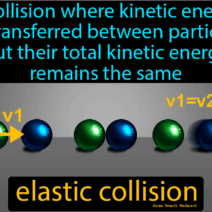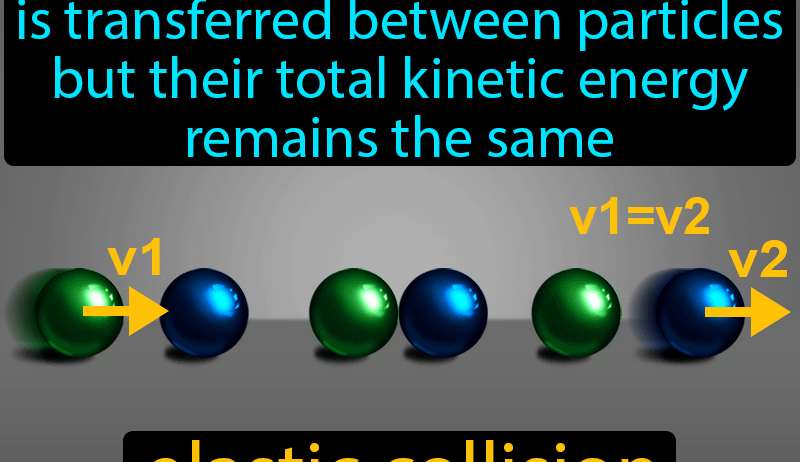In the realm of physics, collisions are a fundamental aspect of motion and energy transfer. A deeper understanding of these interactions reveals the complexities surrounding energy conservation. Particularly intriguing are super elastic collisions, which present a unique case in the study of momentum and energy. This article seeks to elucidate the concept of energy conservation within super elastic collisions, contrasting it with elastic and inelastic collisions to foster a comprehensive understanding of these phenomena.
To begin, it is essential to clarify the terminology involved in collision mechanics. A collision occurs when two or more bodies interact through a force over a relatively short time frame. The three primary types of collisions are elastic, inelastic, and super elastic. Each classification hinges upon how kinetic energy and momentum are conserved during the interaction. In an elastic collision, both kinetic energy and momentum are conserved. In contrast, an inelastic collision conserves momentum but not kinetic energy, leading to a transformation of kinetic energy into other forms of energy, such as thermal energy or sound.
Super elastic collisions are a fascinating subclass of elastic collisions. They occur when the total kinetic energy after the collision exceeds the total kinetic energy before the collision, which may seem counterintuitive. This phenomenon generally involves two bodies where some form of potential energy is transformed into kinetic energy, resulting in an increase in the system’s overall kinetic energy post-collision. A classic example of this is seen in certain types of high-energy physics experiments or specific interactions in molecular dynamics.
In the context of energy conservation, it is crucial to recognize that all forms of energy within a closed system are, in theory, conserved—though the distribution and form of this energy can change. In a purely elastic collision, energy merely shifts between the colliding bodies without any loss. In a super elastic collision, however, energy is added to the system, often derived from internal potential energy sources. Therefore, while energy is conserved in a broader sense, the dissipation and forms in which energy exist can be incredibly dynamic in super elastic interactions.
To illustrate how super elastic collisions deviate from standard energy conservation, let us consider an example involving springs. Imagine two objects, each with a compressed spring. When these objects collide, the springs decompress, and the energy stored in them converts into kinetic energy, propelling the objects apart with greater velocity than they possessed before the collision. Here, the initial potential energy manifests as kinetic energy, thereby exceeding the initial kinetic energy of the system.
Analyzing super elastic collisions highlights the role of potential energy in energy transformations. In classical mechanics, potential energy can arise from various sources, such as gravitational forces, spring tension, or electrostatic interactions. The transition of potential energy to kinetic energy during a super elastic collision signifies the complexity of energy dynamics. This nuance underscores that while momentum remains conserved throughout any type of collision, kinetic energy can be augmented through energy transformations, introducing an additional layer of understanding to energy interactions.
Numerous scientific studies emphasize the implications of super elastic collisions within various disciplines. In materials science, for instance, researchers have observed super elastic behavior in shape memory alloys, which can undergo substantial deformations and return to their original shape upon releasing stresses. The energy retained within these alloys during deformation demonstrates the principles of super elasticity, as some potential energy is regained during relaxation, contributing to kinetic energy upon reconfiguration.
From a broader perspective, the implications of super elastic collisions extend into fields such as educational demonstrations and technological innovations. Physics educators often utilize examples of elastic versus inelastic collisions to convey fundamental principles. Super elastic collisions amplify these demonstrations, allowing students to witness real-time energy transformations that defy standard expectations. Additionally, advancements in technology, such as collisionless particle accelerators or high-speed impacts utilized in material testing, harness super elastic principles to optimize energy efficiency and minimize energy losses.
It is pertinent to acknowledge that the study of super elastic collisions is not merely an academic pursuit but has tangible applications in engineering and technology. As society moves towards sustainability and energy conservation, understanding these collision dynamics offers potential avenues for energy-efficient designs. By harnessing mechanical systems that exploit super elastic characteristics, industries can reduce energy expenditures during manufacturing processes or enhance the durability and resilience of products.
Conclusively, while energy conservation principles assert that energy cannot be created or destroyed, the phenomena associated with super elastic collisions demonstrate that energy can indeed take on novel forms and increase under specific conditions. The distinction between different types of collisions enhances comprehension of energy transfer methods and underscores the complex, interdependent relationships between various forms of energy. By exploring the intricacies of super elastic collisions, we uncover enriching insights into the potential harnessing of energy systems, fostering innovation and resilience in our pursuit of sustainable practices.






